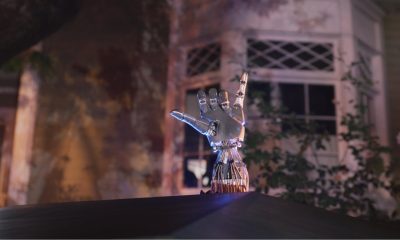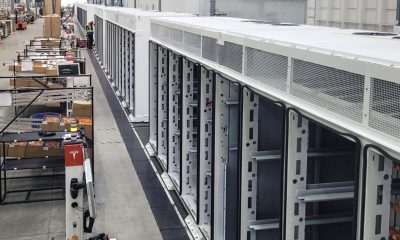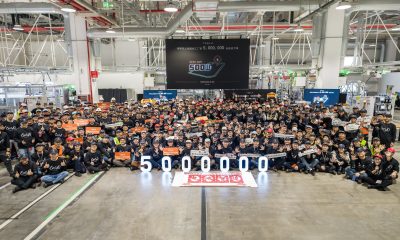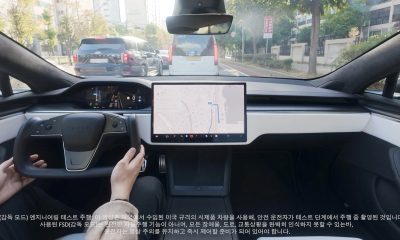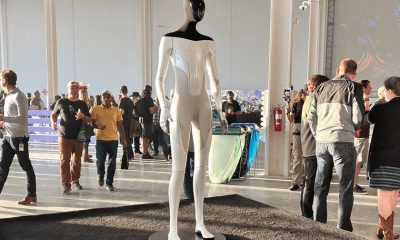
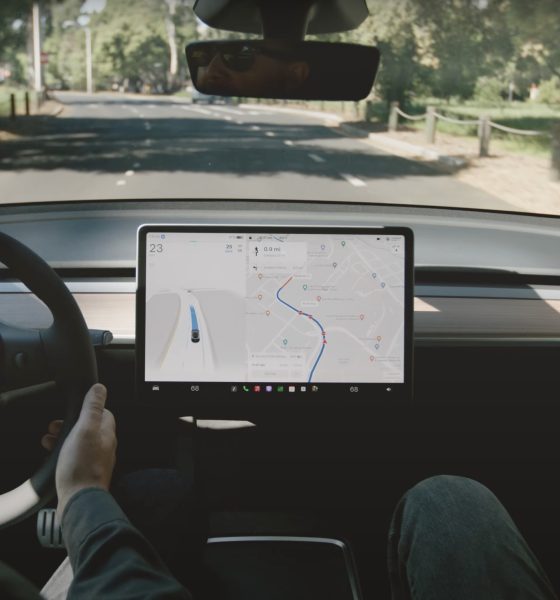
News
Tesla plans to leverage data center in China to train self-driving algorithm: report
Tesla is planning to utilize a data center in China to train its self-driving algorithm as the company continues to develop fully autonomous electric vehicles, a new report states.
The company will reportedly shift some of its data processing to the Chinese region and plans to develop a data center just two weeks after winning approval for its Full Self-Driving suite in China.
Reuters reported the story, stating two people with knowledge of the project revealed the details.
Tesla will need to work with a Chinese partner to set up the data center for the development of a more robust Full Self-Driving suite operation. According to one of the sources, Tesla has spoken to Nvidia about buying graphic processing units for the potential Chinese data processing center.
The potential use of a Chinese data center reportedly started becoming more realistic when Musk visited Premier Li Qiang in China. This meeting also helped Tesla gain tentative approval for the FSD suite in the country, something that was bullish for its development of semi-autonomous driving technology.
Tesla and China have had a robust and successful relationship since the automaker opened up its production facility near Shanghai.
Quoting Yale Zhang, Managing Director at Automotive Foresight, a Shanghai-based consultancy firm, the report said:
“China had played a key role in scaling up EV production for Tesla with the Shanghai factory. It would again serve a significant part in scaling up mass adoption of autonomous driving technologies.”
Tesla would not be the first to utilize China for data storage centers in at least a part of its business. Hyundai, Volkswagen, Toyota, Nissan, and Mazda also have used China for data storage, but none of it is used for AI system training.
I’d love to hear from you! If you have any comments, concerns, or questions, please email me at joey@teslarati.com. You can also reach me on Twitter @KlenderJoey, or if you have news tips, you can email us at tips@teslarati.com.
Elon Musk
Elon Musk’s Boring Co goes extra hard in Nashville with first rock-crushing TBM
The Boring Company’s machine for the project is now in final testing.
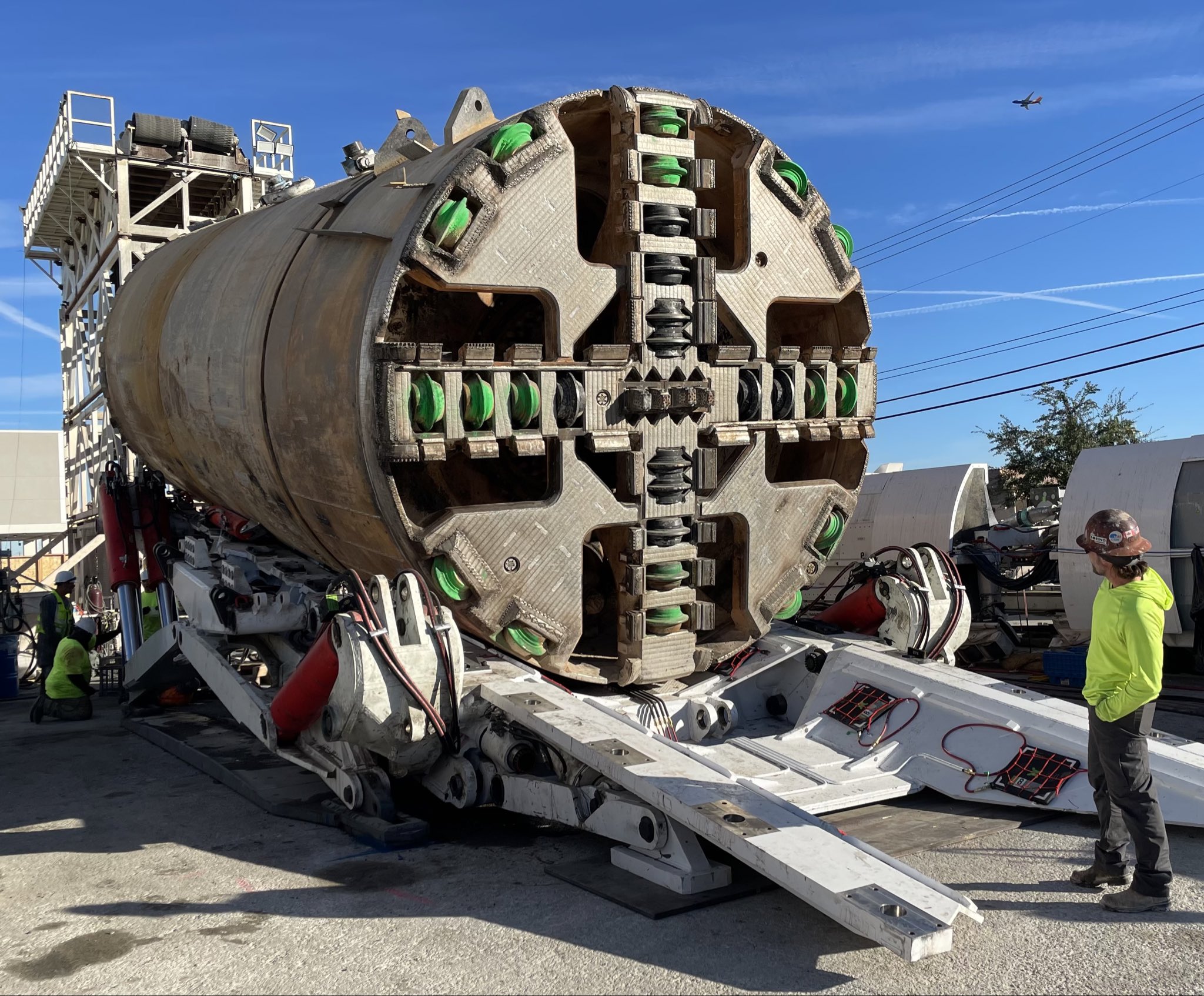
The Boring Company is gearing up to tackle one of its toughest projects yet, a new tunnel system beneath Nashville’s notoriously tough limestone terrain. Unlike the soft-soil conditions of Las Vegas and Austin, the Music City Loop will require a “hard-rock” boring machine capable of drilling through dense, erosion-resistant bedrock.
The Boring Company’s machine for the project is now in final testing.
A boring hard-rock tunneling machine
The Boring Company revealed on X that its new hard-rock TBM can generate up to 4 million pounds of grip force and 1.5 million pounds of maximum thrust load. It also features a 15-filter dust removal system designed to keep operations clean and efficient during excavation even in places where hard rock is present.
Previous Boring Co. projects, including its Loop tunnels in Las Vegas, Austin, and Bastrop, were dug primarily through soft soils. Nashville’s geology, however, poses a different challenge. Boring Company CEO and President Steve Davis mentioned this challenge during the project’s announcement in late July.
“It’s a tough place to tunnel, Nashville. If we were optimizing for the easiest places to tunnel, it would not be here. You have extremely hard rock, like way harder than it should be. It’s an engineering problem that’s fairly easy and straightforward to solve,” Davis said.
Nashville’s limestone terrain
Experts have stated that the city’s subsurface conditions make it one of the more complex tunneling environments in the U.S. The Outer Nashville Basin is composed of cherty Mississippian-age limestone, a strong yet soluble rock that can dissolve over time, creating underground voids and caves, as noted in a report from The Tennessean.
Jakob Walter, the founder and principal engineer of Haushepherd, shared his thoughts on these challenges. “Limestone is generally a stable sedimentary bedrock material with strength parameters that are favorable for tunneling. Limestone is however fairly soluble when compared to other rack materials, and can dissolve over long periods of time when exposed to water.
“Unexpected encounters with these features while tunneling can result in significant construction delays and potential instability of the excavation. In urban locations, structures at the ground surface should also be constantly monitored with robotic total stations or similar surveying equipment to identify any early signs of movement or distress,” he said.
Elon Musk
Elon Musk shares ridiculous fact about Optimus’ hand demos
It appears that Optimus’ V3 iteration is still very much under wraps.

Elon Musk recently revealed something quite shocking about the Optimus demonstration hand that was showcased at the 2025 Annual Shareholder Meeting. As per the CEO, the complex robotic hand that impressed the event’s attendees was not a component of Optimus V3 at all.
Needless to say, it appears that Optimus’ V3 iteration is still very much under wraps.
Optimus’s hand
Even in Tesla’s We, Robot event last year, the company showcased a robotic hand that seemed capable of performing complex tasks. A similar hand was showcased at the recent investor event. It was then no surprise that some attendees and EV community members assumed that the robotic component, which was very dexterous, was a preview of Optimus V3’s hand.
As per Elon Musk in a recent post on X, however, this was not the case. While the robotic hand that Tesla showcased at the 2025 Annual Shareholder Meeting was already very impressive, it was still a V2 component. In response to a quote post from his mom Maye Musk, who noted that “Elon told me a few times that the hand is the most difficult part of the robot,” Elon Musk clarified that the impressive component was still from Optimus V2.
“This is just the V2 Optimus hand. The V3 hand is another level beyond this. Exquisite engineering,” Musk wrote in his post on X.
Not like Tesla
Tesla is designing Optimus to be a potential replacement for humans in some of the world’s most delicate tasks, such as surgery. It is then extremely important for Optimus’ hand to be very dexterous and refined in its movements. This is something that even companies that are also producing humanoid robots have yet to accomplish fully. Musk highlighted this during the Annual Shareholder Meeting, when he discussed how Tesla is really the only company that can scale humanoid robots properly.
“You will see certainly many companies showing demonstration robots. There’s really three things that are super difficult about robots. One is the engineering of the forearm and hand because the human hand is an incredible thing, actually. It’s super dexterous.
“So, engineering the hand really well, the real-world AI, and then volume manufacturing. Those are generally the things that are missing. One or more of those things are missing from other companies. So Tesla is the only one that has all three of those,” Musk said.
Energy
Tesla starts hiring efforts for Texas Megafactory
Tesla’s Brookshire site is expected to produce 10,000 Megapacks annually, equal to 40 gigawatt hours of energy storage.

Tesla has officially begun hiring for its new $200 million Megafactory in Brookshire, Texas, a manufacturing hub expected to employ 1,500 people by 2028. The facility, which will build Tesla’s grid-scale Megapack batteries, is part of the company’s growing energy storage footprint.
Tesla’s hiring efforts for the Texas Megafactory are hinted at by the job openings currently active on the company’s Careers website.
Tesla’s Texas Megafactory
Tesla’s Brookshire site is expected to produce 10,000 Megapacks annually, equal to 40 gigawatt hours of energy storage, similar to the Lathrop Megafactory in California. Tesla’s Careers website currently lists over 30 job openings for the site, from engineers, welders, and project managers. Each of the openings is listed for Brookshire, Texas.
The company has leased two buildings in Empire West Business Park, with over $194 million in combined property and equipment investment. Tesla’s agreement with Waller County includes a 60% property tax abatement, contingent on meeting employment benchmarks: 375 jobs by 2026, 750 by 2027, and 1,500 by 2028, as noted in a report from the Houston Business Journal. Tesla is required to employ at least 1,500 workers in the facility through the rest of the 10-year abatement period.
Tesla’s clean energy boom
City officials have stated that Tesla’s arrival marks a turning point for the Texas city, as it highlights a shift from logistics to advanced clean energy manufacturing. Ramiro Bautista from Brookshire’s economic development office, highlighted this in a comment to the Journal.
“(Tesla) has great-paying jobs. Not just that, but the advanced manufacturing (and) clean energy is coming to the area,” he said. “So it’s not just your normal logistics manufacturing. This is advanced manufacturing coming to this area, and this brings a different type of job and investment into the local economy.”
-

 News5 days ago
News5 days agoTesla shares rare peek at Semi factory’s interior
-

 Elon Musk5 days ago
Elon Musk5 days agoTesla says texting and driving capability is coming ‘in a month or two’
-

 News4 days ago
News4 days agoTesla makes online ordering even easier
-

 News4 days ago
News4 days agoTesla Model Y Performance set for new market entrance in Q1
-

 News5 days ago
News5 days agoTesla Cybercab production starts Q2 2026, Elon Musk confirms
-

 News5 days ago
News5 days agoTesla China expecting full FSD approval in Q1 2026: Elon Musk
-

 News6 days ago
News6 days agoTesla Model Y Performance is rapidly moving toward customer deliveries
-
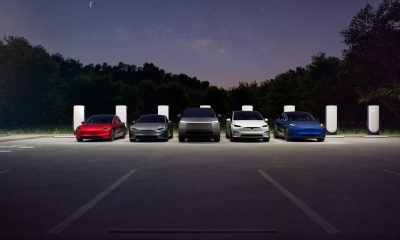
 News3 days ago
News3 days agoTesla is launching a crazy new Rental program with cheap daily rates


